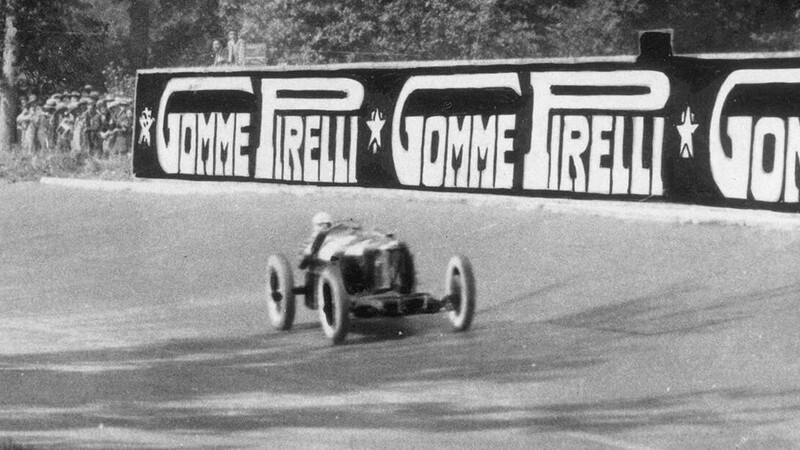Monza racetrack, the temple of speed

On 10 September 1922 in the Royal Park of Monza it was practically impossible to walk: almost 200 thousand people came from all over Italy and Europe to see the cars speeding along the asphalt of the new, ultra-modern circuit. The mechanics prepared the cars for the second Italian Grand Prix in history, the first in the newborn racetrack, and there was curiosity and fibrillation in the air, despite the eve being complicated by a fatal accident and a series of retreats, so much so that of the thirty-one cars entered, only eight showed up at the starting blocks.
The day before, during the Saturday trial runs, German driver Gregor Kuhn lost his life after going off the road with his Austro-Daimler Sascha, causing his team to retire along with his fellow Mercedes countrymen.
On Sunday, despite the shock caused by the accident, the enthusiasm among the people was extremely high. Fiat had even organized a special train, on board there were roughly two thousand workers that had arrived from Turin to see the results of their hard work directly on the track: they weren't disappointed, because at the final finish line on the first two steps on the podium there were two Fiat 804s, both with Pirelli tyres, the first cars to enter the hall of fame of the legendary Monza racetrack.
The decision to build a brand new racetrack was taken in January 1922 by the Milan Automobile Club, on the twenty-fifth anniversary of the association. The objectives of such a project are many: attract international buyers for cars made by Italian companies, have a stable place to run the Italian Grand Prix (which the year before had taken place on the semi-permanent circuit of Montichiari) and, above all, a circuit where to carry out experiments and tests.
Not surprisingly, over the years numerous technological innovations will see the light in Monza, from the telepass to the guard-rail, right up to the draining of the asphalt. On the overhead icon, an oval ring joined by two parallel straights long 857 meters each, the pilots would turn for the first time going over 300 kilometres per hour, thanks to the inclination designed to reduce the action of centrifugal force.
The project, entrusted to the architect Alfredo Rosselli and to engineer Piero Puricelli's construction company, is financed by the Increase of Motoring and Sports Company, with entirely private capital, through investments by entrepreneurs who were excited by the idea of contributing to the progress of industry, technology and speed.

The fifth Italian Grand Prix, held on the Monza circuit on 6 September 1925. Gastone Brilli Peri won in an Alfa Romeo, photo Strazza, courtesy Fondazione Pirelli
At the beginning of the 1920s, the futurist culture inebriated most of the corporate executives; their enthusiasm, however, was initially hampered by the Superintendency, which blocked the work for reasons of artistic value and conservation of the landscape. A compromise was found eventually with the revision of the track's length: no longer the 14 kilometres initially conceived by Rosselli, but 10, so as not to cut down too many trees in the Royal Park of Monza. A road track 5 and a half kilometres long and an oval ring with its two overhead structures 4 and a half kilometres long, which could be used either together or separately; these features will constitute the Monza racetrack, the third permanent circuit in the world after Indianapolis, in the United States, and Brooklands, in England.
Before Hamilton and Schumacher, both five-time winners in the extremely fast Italian Grand Prix, and before Senna, Lauda, Prost and Nuvolari, the first driver to raise his arms to the sky at Monza is Pietro Bordino, a thirty-five year old from Turin who, on 10 September 1922, drove a Fiat 804 with Pirelli flex supercord tyres, like his friend and companion Felice Nazzaro, second at arrival with the same car and the same tyres.
Three thousand five hundred workers, two hundred wagons, thirty lorries and an eighty-wagon railway worked tirelessly to complete the racetrack by the end of the summer. Its construction, which began on May 15, 1922, was completed at the end of August, in time for the inauguration, which took place on September 3rd: in the rain and in the presence of the Prime Minister, Luigi Facta, Pietro Bordino won the race for small cars with a Fiat 501 racing model.
Yet, it is a week later that Bordino enters history, winning the first Grand Prix of Italy in Monza in 5 hours, 43 minutes and 13 seconds, with an average speed of almost 140 kilometres per hour. Ninety-one years later, in 2003, Michael Schumacher will go on to win the Grand Prix with an average speed of 247,585 kilometres per hour, a record that still remains unbeaten in Formula 1. From the construction completed in record time to the protagonists who dominated the circuit, at the Monza racetrack speed has always been the main objective.

The 1948 Monza Grand Prix, photo Fumagalli, courtesy Fondazione Pirelli




